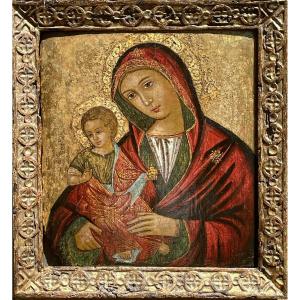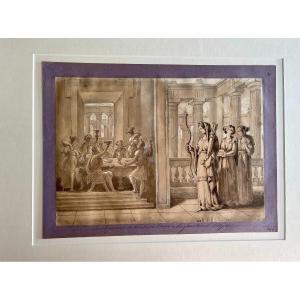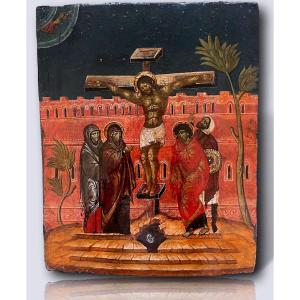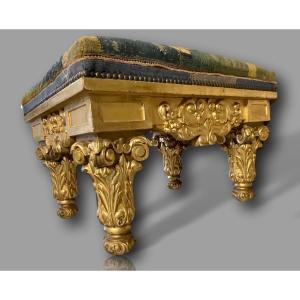The modeling of the torso is handled with great delicacy, in subtle flesh tones nuanced with ochre. The blood is depicted in a restrained manner, avoiding any pathos in favor of the dignity of the face. The barely marked crown of thorns is in keeping with the Italian tradition of "Christ dolens," less dramatic than the Nordic style.
The golden halo is particularly carefully crafted, adorned with dotted lines and motifs engraved in concentric circles. The incised gilding (pastiglia) is of remarkable quality, reminiscent of the works of the Sienese or Florentine Late Gothic movement.
Technique:
Egg tempera on chalk plaster (gesso)
Gold ground worked with gold leaf and engraved
Monoxyl panel
Dimensions: 31 cm x 21 cm
Date and school:
Central Italy (probably Tuscany)
Circa 1440–1460
In the style of Sano di Pietro, Benvenuto di Giovanni, or even a provincial workshop influenced by Fra Angelico
This type of representation derives from Byzantine models of "Christ philotroches" (friend of the suffering) and spread widely in the West following the Franciscan spiritual revival. It illustrates Christ's voluntary suffering for humanity and encourages inner devotion. These small icons were often placed on private altars or included in triptychs. The gilding and pigments are beautifully preserved. The natural wear of time reinforces the work's authentic and contemplative character. Some superficial scratches are visible along the edges. No notable repainting.
This panel is a rare example of pre-Renaissance devotional painting, at the crossroads of Sienese Gothic and early Florentine styles. The elegance of the drawing, the precision of the modeling, and the quality of the gilding testify to a refined workshop, in the Lorenzettian and Franciscan tradition.
Very Careful shipping
#ChristOfSorrow #Quattrocento #TemperaOnPanel #AncientPainting #ItalianArt #LateGothic #SanoDiPietro #BenvenutoDiGiovanni #FraAngelico #DevotionalPainting #ChristianIconography #Proantic #SacredArt #EarlyRenaissance #AncientPainting















































 Le Magazine de PROANTIC
Le Magazine de PROANTIC TRÉSORS Magazine
TRÉSORS Magazine Rivista Artiquariato
Rivista Artiquariato